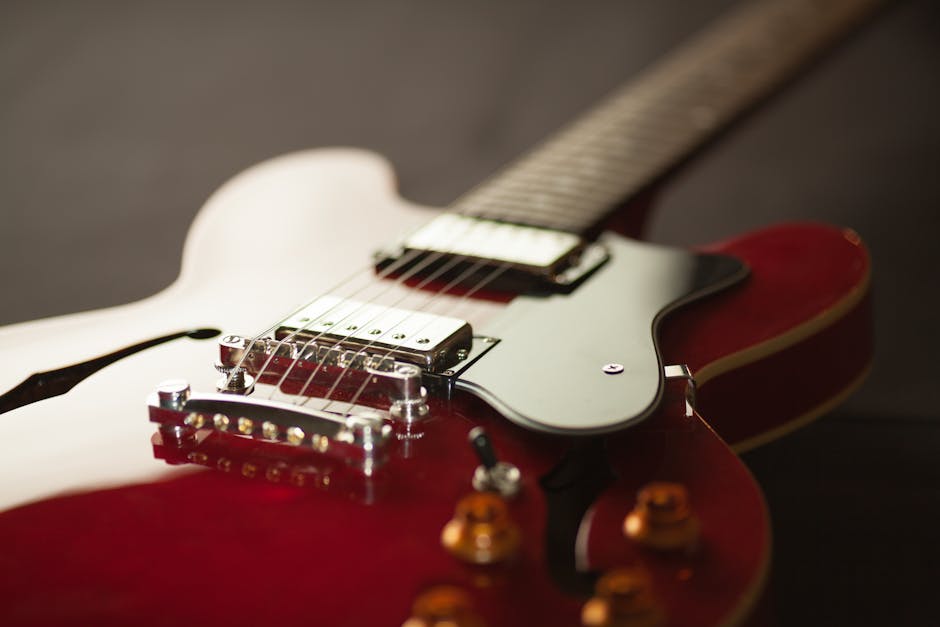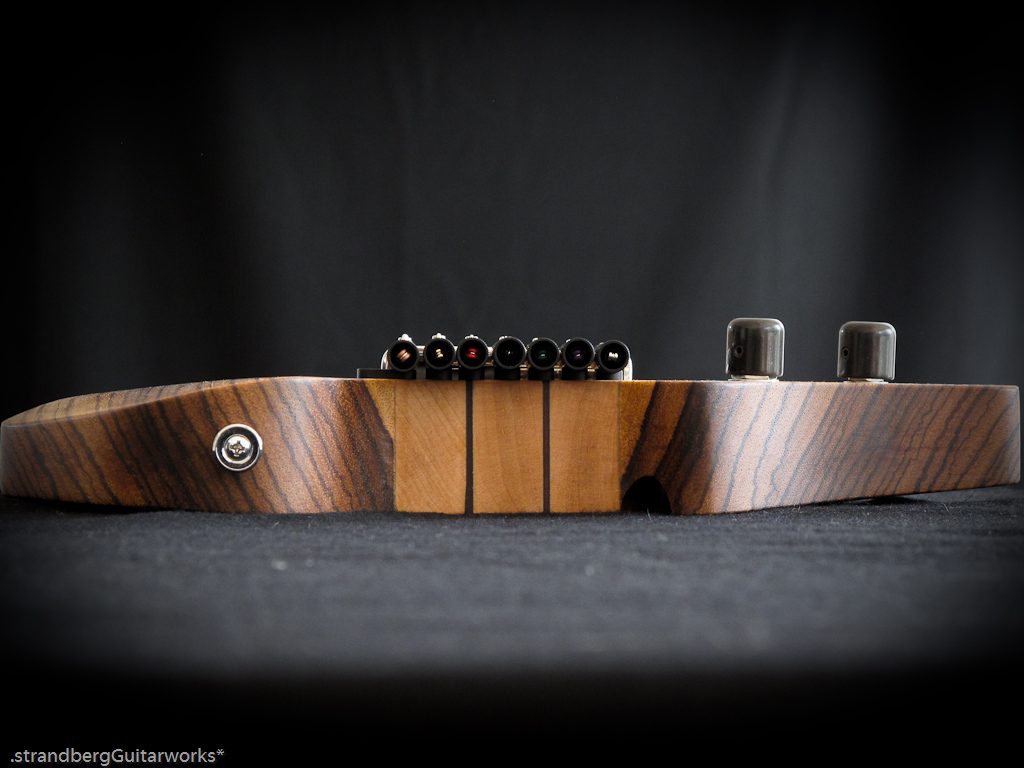Do you ever feel like your guitar is giving you the silent treatment? Is your once smooth playing now sounding more like a rusty gate trying to open? Fear not, dear guitar enthusiasts, for we have the solution to all your stringed woes. In this article, we will guide you through some DIY maintenance fixes to keep your guitar playing as smooth as a jazz solo on a summer night. So grab your tools (and maybe a sandwich for sustenance), and let’s get this musical machine purring like a well-tuned sports car.
Contents
- 1 Understanding the Basics of Guitar Maintenance
- 2 Identifying Common Causes of Poor Guitar Performance
- 3
- 4 Implementing Routine Cleaning and Moisture Control
- 5 Adjusting Truss Rod for Optimal Neck Alignment
- 6 Exploring Fretboard Conditioning Techniques
- 7 Incorporating Lubrication for Smooth Playing Action
- 8 FAQs
- 9 Stay Smooth and Strum On!
Understanding the Basics of Guitar Maintenance
So you’ve finally picked up that dusty old guitar in the corner of your room and decided it’s time to learn how to play. But before you start shredding like a rockstar, you need to understand the basics of guitar maintenance. Trust me, you don’t want your strings breaking in the middle of a killer solo!
First things first, let’s talk about tuning. You can’t play a beautiful melody if your guitar sounds like a dying cat. Invest in a good tuner (or use an app on your phone if you’re cheap like me) and make sure your strings are in tune before you start jamming. It might take a few tries, but your ears will thank you.
Next up, let’s talk about cleaning. No one likes a dirty guitar, especially not your fingers. Grab a soft cloth and wipe down your strings and fretboard regularly to keep them in tip-top shape. And don’t forget to give your guitar a little love by polishing the body every once in a while. It’ll thank you by sounding a million times better.
Lastly, let’s chat about storage. Your guitar is like a delicate flower – it needs to be handled with care. Keep it in a cool, dry place away from extreme temperatures and humidity. Invest in a good case or guitar stand to protect your precious instrument from accidents (because we all know accidents happen when you least expect them).
Identifying Common Causes of Poor Guitar Performance
Ever feel like your guitar playing just isn’t up to par? Don’t worry, you’re not alone! There are many common causes of poor guitar performance that can easily be fixed once identified.
One major issue could be your lack of practice. Remember, Rome wasn’t built in a day and neither is a killer guitar solo. Make sure to put in the hours to hone your skills.
Another culprit could be poor technique. Are you holding your guitar correctly? Are your fingers positioned properly on the fretboard? Take some time to review your technique and make any necessary adjustments.
Lastly, don’t forget about your equipment. Is your guitar properly tuned? Are your strings old and worn out? A well-maintained instrument can make all the difference in your performance.

string-changing-and-tuning”>Mastering the Art of String Changing and Tuning
So you’ve got yourself a shiny new set of strings for your beloved instrument. Congratulations! Now comes the fun part - changing them without breaking a sweat (or a string).
First things first, make sure you’ve got all the necessary tools handy. You’ll need a tuner, a string winder, and of course, your new strings. Oh, and a healthy dose of patience wouldn’t hurt either.
Start by loosening the old strings and removing them one by one. Pro tip: keeping track of which string goes where can save you a lot of time and headache later on. Once the old strings are out of the way, it’s time to bring in the new recruits.
Now comes the fun part - tuning your instrument. This step requires a keen ear and a steady hand. Don’t be afraid to adjust the tension of each string until you find that sweet spot. And remember, Rome wasn’t tuned in a day. So take your time, be patient, and soon enough you’ll be jamming out like a rockstar.

Implementing Routine Cleaning and Moisture Control
Routine cleaning and moisture control are crucial for maintaining a clean and dry environment. Without proper maintenance, you might end up with a moldy mess that even a hazmat suit couldn’t handle. So, let’s roll up our sleeves (or put on those hazmat suits) and tackle the task with gusto!
First things first, grab your trusty cleaning supplies. You’ll need a broom, mop, scrub brush, and possibly a flamethrower (just kidding, please don’t use a flamethrower). Dust off those hard-to-reach corners, sweep away any debris, and scrub away any stubborn stains. It’s like a high-stakes game of hide-and-seek, but instead of finding a hidden treasure, you’re just trying to avoid mold spores.
Next up, let’s talk about moisture control. You want to keep things dry and cozy, like a good book and a cup of tea on a rainy day. Check for any leaks or water damage, fix any faulty plumbing, and consider investing in a dehumidifier. Moisture is the enemy here, so make sure to keep it at bay before it starts plotting its moldy takeover.
In conclusion, is the key to a happy and healthy living environment. So, grab your cleaning supplies, put on your detective hat, and go on a mold-hunting adventure like no other. Just remember, with great cleaning power comes great responsibility (and possibly a mild case of paranoia about mold).

Adjusting Truss Rod for Optimal Neck Alignment
So you’ve finally decided to take matters into your own hands and adjust the truss rod on your guitar for optimal neck alignment. Good for you! It’s a brave step, but fear not, with a little bit of know-how and a lot of trial and error, you’ll have that neck straighter than an arrow in no time.
First things first, grab yourself a trusty tool – a hex key – because you’re going to need it to unlock the mysteries of the truss rod. Remember, lefty-loosey, righty-tighty – just like unscrewing a jar of pickles, but without the delicious reward at the end.
Now that you have your trusty hex key in hand, it’s time to get down to business. Take it slow, don’t rush this – think of it like a delicate dance between you and the truss rod. Go easy on it, show it some love, and for the love of all that is holy, don’t force it!
Once you feel like you’re getting somewhere, give that neck a good look over. If it’s straighter than a line-dancing cowboy, you’ve done well, my friend. If not, no worries – it’s all part of the journey towards perfect neck alignment. Keep tweaking, keep adjusting, and before you know it, you’ll be strumming away on a guitar with a neck so straight, it would make a ruler jealous.
Exploring Fretboard Conditioning Techniques
Ever looked at your guitar fretboard and thought, “Wow, this looks dusty”? Well, fear not, because fretboard conditioning techniques are here to save the day! Say goodbye to grimy frets and hello to smooth, shiny goodness.
One tried-and-true method is to use lemon oil on your fretboard. Not only does it condition the wood, but it also leaves behind a delightful citrusy scent – bonus! Just remember to use a small amount and wipe away any excess to avoid a sticky mess.
If lemon oil isn’t your thing, you can also opt for fretboard cleaner specifically designed for guitar maintenance. These magical potions not only clean your fretboard but also help remove built-up dirt and grime, ensuring your frets sparkle like never before.
For the brave souls out there, you can even try DIY fretboard conditioning. Just mix equal parts white vinegar and water, apply to a soft cloth, and gently rub your fretboard. This method is not only cost-effective but also a great way to show your fretboard some love without breaking the bank.
Incorporating Lubrication for Smooth Playing Action
When it comes to keeping your instrument in tip-top shape, is key. Imagine trying to play a beautiful melody on a squeaky, sticky instrument – not exactly the vibe we’re going for. So let’s dive into how you can easily incorporate lubrication into your routine for that smooth, buttery playing action!
First things first, consider the different parts of your instrument that may benefit from a little extra help in the lubrication department. This could include tuning pegs, hinges, screws, and any other moving parts that might cause friction. By identifying these areas and treating them with the right lubricant, you’ll notice a significant improvement in the overall playability of your instrument.
When choosing a lubricant, opt for one that is specifically designed for musical instruments to ensure compatibility and effectiveness. Some popular options include:
- Graphite lubricant for tuning pegs
- Specialized oils for keys and valves
- Silicone grease for slides and hinges
Regularly incorporating lubrication into your maintenance routine will not only keep your instrument playing smoothly, but it will also help prolong its longevity. So don’t wait until you’re struggling to hit that high note – grab some lubricant and get your instrument purring like a well-oiled machine!
FAQs
Why does my guitar keep going out of tune?
Well, it’s probably tired of playing the same old songs over and over. But in all seriousness, your guitar might be going out of tune because the strings are old and worn out. Give them a break and replace them with some fresh new strings.
My guitar has some buzz when I play certain strings. How can I fix this?
That buzz you’re hearing is just your guitar trying to communicate with you. It’s telling you that it needs a little TLC. Check the neck for any bends or twists, and adjust the truss rod if needed. If that doesn’t work, try raising the action on your guitar.
My guitar is getting scratchy and the sound is fuzzy. What can I do to clean it up?
Sounds like your guitar needs a spa day! Grab a soft cloth and some guitar polish and give your baby a good cleaning. Make sure to also clean the fretboard and the hardware with a damp cloth. Your guitar will thank you by sounding as smooth as butter.
My guitar has some sticky tuning pegs. How do I get them to turn smoothly again?
Those pegs just need a little bit of lubrication to get them in the mood to turn smoothly again. Grab some graphite or a bit of pencil lead and rub it on the grooves of the tuning pegs. Voila! Your pegs will be turning like a dream in no time.
My guitar has some deep scratches on the body. Can I fix this myself?
Ah, battle scars! Those deep scratches add character to your guitar, but if you really want to get rid of them, you can try using some touch-up paint. Just make sure to match the color of your guitar as closely as possible. Or, you can just embrace the scratches and call them your guitar’s tattoos.
Stay Smooth and Strum On!
Congratulations, you’ve reached the end of our guide to DIY maintenance fixes for keeping your guitar playing smooth. Now that you’re armed with these handy tips and tricks, you’ll be able to tackle any pesky problems that come your way with confidence and ease.
So go ahead, grab your trusty guitar and strum on, knowing that you have the power to keep it in tip-top shape all on your own. Remember, a little maintenance goes a long way in ensuring that your guitar stays in prime playing condition. Happy strumming!



